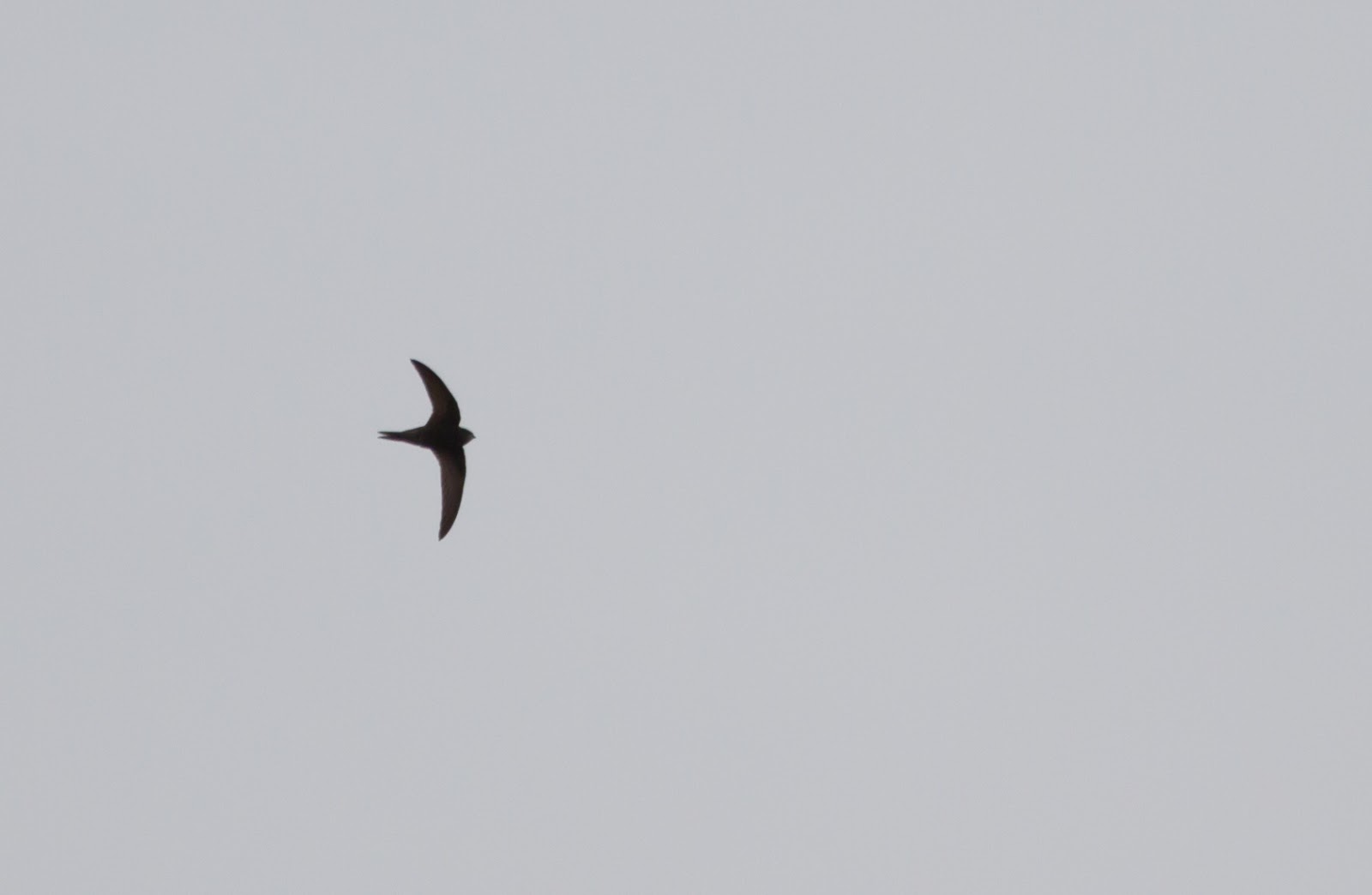Despite night time temperatures barely dropping below about 15°, the early leaf dropping trees, such as Horse Chestnut, tell us autumn is here:
Recent records of note are very few and far between. A Swift on 30th August was the latest ever by nearly two weeks. It flew in from the east, attracting attention as it was mobbed by a Crow:
The local Red Kites are in full wing and tail feather moult. You can clearly see the newly growing central tail feathers on this bird:
The mild temperatures have helped ensure that butterflies are still with us. Red Admirals are common:
Yellow Brimstones, much less common out here, are building up their fat reserves to overwinter, one of the few butterflies to do so. This is a male, hiding his luminous yellow upperwings:
Locally breeding Yellow Wagtails, Whitethroats, Blackcaps, Swallows and House Martins are still present. Chiffchaffs are in most of the hedgerows, some of them autumn singing. There was even a Willow Warbler in with them this morning. All three young from the local Hobby pair are still feeding above the fields. The only other birds of note are the developing Linnet flocks, out to the east of the village. Now that harvest has taken place, but before the land is ploughed for autumn sowing, there is a brief window of opportunity for the seed eating birds to feast. There were over 200 Linnets and 30 Yellowhammers in the fields this morning. Before agriculture intensified and the autumn sowing of crops began on an industrial scale, these birds could have fed in the stubble all winter. Now they only have a few weeks before everything is ploughed in. This is one of a number of reasons why modern agricultural practices have decimated our wild bird populations. Here are some of the current Linnet flock:
At least 2 pairs of Green Woodpeckers have produced young in the village. One pair feed around the college gardens, the other in the local park. In late August the young were still quite immature, with much grey in their plumage:
By early September they are rapidly acquiring adult plumage:
Still 89 species for the year. Perhaps this will change next week?













No comments:
Post a Comment